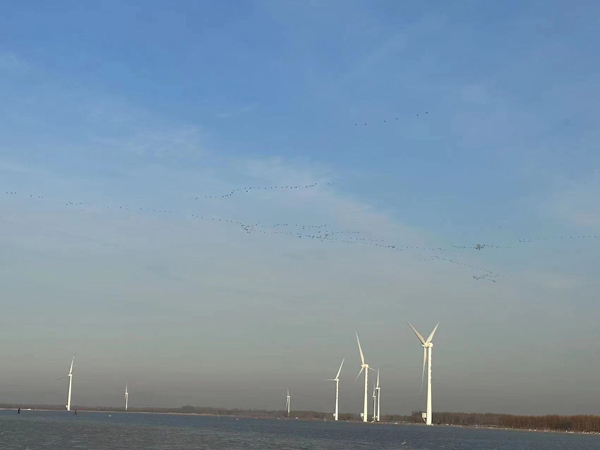Wind energy, an important renewable power source, has witnessed rapid growth in recent years due to its abundance, cleanliness, safety, and mature generation technology. However, global wind power development still falls short of the requirements for achieving a comprehensive energy transition. To address this challenge and fulfill the objectives of the Paris Agreement, it is crucial to understand the future changes in wind resources, particularly in major wind markets in the Northern Hemisphere.
Professor HUANG Gang and Dr. MIAO Haozeyu from the Institute of Atmospheric Physics, Chinese Academy of Sciences, have conducted a new study evaluating the performance of the Coupled Model Intercomparison Project Phase 5 (CMIP5) and Phase 6 (
CMIP6) simulations of surface wind speed in the Northern Hemisphere. By comparing the simulations with observational data, the researchers found that CMIP6 models exhibit an overall improvement in simulation capability, accurately reproducing the observed reduction in surface wind speed in recent decades.
Migrating birds soared over the wind turbine array in the frozen Guanting Reservoir, not far from the site of the 2022 Winter Olympics in Beijing, China. These sprawling white wind turbines have now blended into the natural scenery around the reservoir, becoming one of its most distinctive features. (Photo taken on January 1, 2023 by LIN Zheng)
Building upon the more reliable CMIP6 models, the study further explores the future evolution of wind energy resources in the Northern Hemisphere by the end of the century (2100) under various climate change scenarios. Using different greenhouse gas and aerosol emission scenarios, the researchers project a continued decrease in surface wind speeds on land, with more substantial declines anticipated under higher emission scenarios.
Their study, published in
Renewable Energy, also highlights the non-linear relationship between wind energy and emissions across regions. It predicts that Europe and Asia will experience the fastest decline in wind energy under the SSP3-7.0 emission scenario, while North America will experience a more moderate decline. These findings underscore the critical importance of reducing greenhouse gas and aerosol emissions to preserve and maximize wind energy resources.
The implications of this research are profound, offering essential guidance on how carbon emissions impact wind energy and informing the siting and planning of future wind farms. By incorporating the study's findings into strategic decision-making, policymakers and industry stakeholders can contribute to alleviating the global energy crisis, safeguarding the ecological environment, promoting sustainable human development, and accelerating the achievement of "Carbon peaking" and "Carbon neutrality" goals.
As the world strives to combat climate change and transition towards cleaner energy sources, wind energy emerges as a crucial pillar of the sustainable energy mix. By understanding the interplay between climate change, emissions, and wind resources, we can pave the way for a greener future while addressing the urgent need for decarbonization.
Citation: Haozeyu Miao, Haiming Xu, Gang Huang, Kai Yang. 2023. Evaluation and future projections of wind energy resources over the Northern Hemisphere in CMIP5 and CMIP6 models, Renewable Energy, 211, 809-821, https://doi.org/10.1016/j.renene.2023.05.007
Media contact:
Ms. LIN Zheng
Email: jennylin@mail.iap.ac.cn
Tel: 86-10-82995053
http://english.iap.cas.cn/

